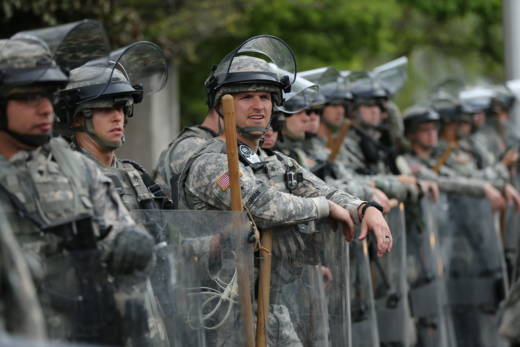A deployment of 50 National Guard troops played a well-publicized role on the streets of Vallejo on Tuesday and Wednesday nights, patrolling to keep government property and critical infrastructure safe amid some reports of illegal activity and violence that took place alongside protests over the Minneapolis police killing of George Floyd.
"Our officers are exhausted, but they're resilient, and they're committed to safeguarding our city. But we needed the additional resources to safeguard many of the businesses that were severely damaged on Monday," said Vallejo Police Chief Shawny Williams at a press conference on Wednesday.
Even in extraordinary times, seeing an organized deployment of National Guard troops in the streets adds an element of surprise. In fact, the California National Guard has not been called out to quell a protest since 1992, when then-Gov. Pete Wilson deployed thousands of the guard in the racially charged aftermath of the Rodney King riots. The historical parallels are clear.
As of Wednesday evening, 3,899 National Guard personnel were activated to back up local law enforcement dealing with racial justice protests across the state, according to Lt. Col. Jonathan Shiroma, a spokesman with the California National Guard. Most were deployed in and around Los Angeles at the request of Mayor Eric Garcetti.
